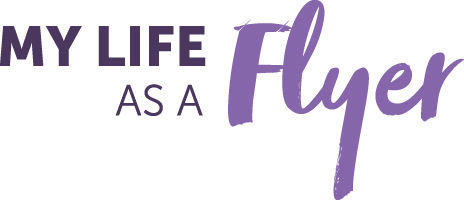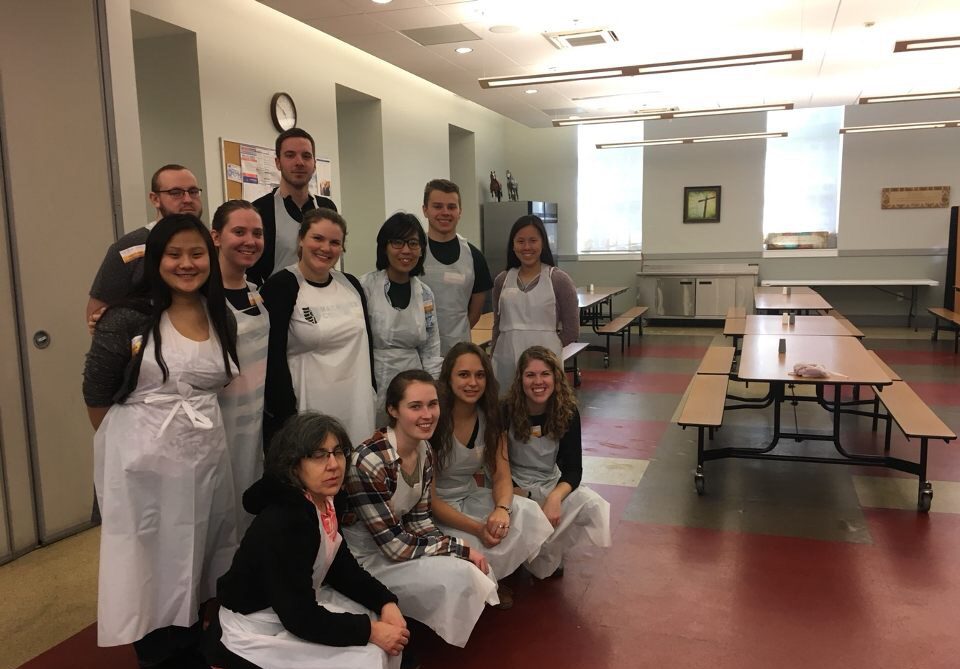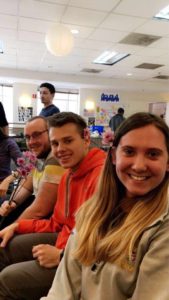To me, one of the best aspects of Nazareth is its commitment to civic engagement. I know that saying that sounds cliche and boring, but that actually quite the opposite. There are a number of programs within the department that will fit with nearly any major’s schedule, and get you out into the community, working with individuals of all backgrounds. Perhaps one of the most immersive civic engagement programs is the Alternative Break Program. I am lucky enough to have taken part in an Alternative Break my sophomore year, and will be returning to lead one of the breaks my junior year.
So what is an Alternative Break? An Alternative Break is a service trip that takes place over spring break, or the fall reading weekend. Applications usually go out around the start of school, and teams are built by November. From there, up until the day you leave for your trip, you learn about the population you will work with. The center now has four trips, one to Washington DC with a focus on poverty and hunger, one to West Virginia with a focus on sustainable housing, and two to Nicaragua with focuses on childhood development and persons with disabilities.
The trip that I was lucky enough to attend went to DC, and it will also be the trip I lead my junior year. With a focus on hunger, poverty and homelessness, I went into the break with the mindset that all we would be doing is serving food to those who came to whatever shelter we were working in, however, the trip became so much more than that.
Over the course of our week in DC, we participated in a range of lessons, service opportunities, and reflections. The lessons were very interesting, as they were taught by community specialists who were working on the front lines to fix the issue at hand. Content ranged anywhere from the history of DC to what a Food Desert is, and how they affect DC. Perhaps one of the best lessons we took part in was a poverty simulator where everyone played a social agency. The simulation showed all of us how societal institutions interacted, and how they sometimes are the cause of some of the biggest issues today.
The service we did was expansive too. We’d usually do service in the afternoon, and on one day for the full work day. Yes, we did serve meals in food shelters, but we did so much more. On our first day in DC, we spent about four hours helping an agency get ready for a banquet they were having to raise money by making flower arrangements. If you told me that i would be spending my spring break making flower arrangements, I would have laughed. But it was honestly incredible to experience an team working together to help this agency.
There was one other service we carried out, one that had a major impact on almost everyone who attended the trip. On one of our final days in DC, we made kits of supplies. They had some hygiene products, food, and water. The next morning, we went out into the city and handed them out to those on the streets. It gave us an opportunity to interact with people who society has forgotten or turned a blind eye to. Everyone who received a gift was so thankful, and would often talk to us until our guide pulled us away to continue the outreach run.
While the week was devoted to service and to education, it is still spring break, and we were in our nation’s capital, so of course there’s free time to explore. Most of the time that we weren’t in service or in a workshop, we’d be out and about exploring the local history and monuments. We’d walk from the Capitol Building to the Washington monument, sometimes to the Lincoln Memorial, almost every night… you can bet I got my steps in! There was also time one of the days to go to the museums around the city, or to do other things if you’re not a history buff.
Look, I really can’t put into words how awesome these trips are. I’ve only mentioned this one trip, but there are so many more. If you truly enjoy serving the community, and you enjoy giving back, I highly recommend these opportunities. I mean lets be honest, what else are you actually going do over spring break, watch tv?



